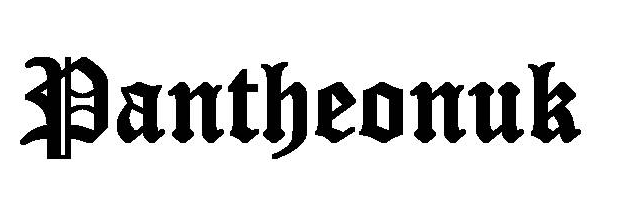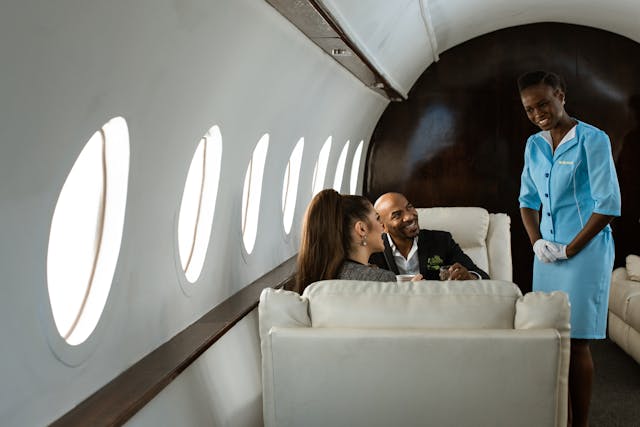Luxury private jet travel is not just about comfort and efficiency—it’s also about security and discretion. High-profile individuals, corporate executives, government officials, and celebrities require more than just exclusivity; they need advanced security protocols to protect their privacy, assets, and well-being while traveling.
To meet these heightened expectations, private aviation providers now deliver bespoke security solutions designed to address both physical and digital threats. These services are offered with guaranteed availability, ensuring peace of mind for travelers who require immediate and secure travel arrangements. The fusion of high-level protection and seamless access reflects the evolving priorities of modern private jet users.
Private jet passengers adopt contemporary security systems beyond conventional airline protocols because of escalating cybersecurity threats together with targeted assaults and aviation-linked security concerns. Private jet security continues to progress by adopting new measures that integrate physical protection protocols with digital data defence systems to serve the requirements of affluent jet owners.
Understanding the Importance of Security in Private Jet Travel
Private jet travel delivers security beyond commercial aviation standards in every way. The elevated risks which high-net-worth individuals experience include hacking attempts along with unauthorized tracking and theft and personal threats. Private aviation provides security systems which surpass commercial protocols because it develops unique safety measures which adapt to each user’s individual requirements.
Traveling elites require absolute privacy along with total safety and simple travel arrangements that protect their confidential movements and prevent security threats.
1. Physical Security: Ensuring Safety at Every Step
VIP jet travelers make physical security their main priority since their celebrity status exposes them to stalkers as well as enthusiastic fans and security threats. Private aviation companies have created multiple safety protocols to protect passengers during their entire journey from departure to arrival.
A. VIP Terminal and Private Hangars
- Private jet passengers bypass crowded airport terminals, reducing exposure to security risks.
- Exclusive FBO (Fixed-Base Operator) terminals provide discreet check-ins, customs clearance, and boarding, ensuring minimal public interaction.
- Private hangars and tarmac access allow travelers to arrive directly at their aircraft, avoiding unnecessary exposure to the public.
B. Advanced Passenger Screening & Background Checks
- Private jet charter companies vet all crew members, ground staff, and security personnel, ensuring no unauthorized individuals are involved in flight operations.
- High-risk zones and geopolitical concerns are factored into flight planning, avoiding airspaces prone to instability or threats.
- Escort and armed security teams are available for high-profile clients who require an additional layer of protection.
C. Secure Ground Transportation Coordination
- Many high-profile travelers coordinate armored vehicle services and professional chauffeurs to ensure safe transit from aircraft to their destination.
- Air-to-ground security teams communicate in real time, ensuring seamless handovers between aviation security and personal protection teams.
2. Cybersecurity in Private Jet Travel: Protecting Digital Footprints
The safety of personal data has emerged as a significant issue that private jet passengers need to address alongside physical security. Those who possess substantial wealth commonly transport business secrets as well as personal and financial documents which cyber attackers might target.
A. Securing In-Flight Communications
- Private Wi-Fi networks onboard private jets are encrypted and monitored to prevent hacking attempts.
- Advanced firewalls and VPN encryption ensure that passengers can conduct business securely while airborne.
- Some aircraft offer onboard IT security specialists to monitor digital threats in real time.
B. Preventing Aircraft Tracking and Location Exposure
- Flight plans can be masked, ensuring that real-time location tracking is only available to authorized personnel.
- Blocking transponder data from public aviation tracking services prevents unauthorized individuals from tracking flight routes.
- Many private jet passengers use secure, unlisted call signs to avoid detection by aviation spotters and digital surveillance programs.
C. Preventing Data Breaches
- Onboard encrypted servers and data storage systems prevent unauthorized access to business files and communications.
- Advanced cybersecurity audits are conducted regularly to ensure that aircraft systems remain secure against evolving threats.
- Crew members are trained to recognize social engineering threats, ensuring that no unauthorized information is shared.
3. Private Jet Charter vs. Ownership: Security Implications
Owner private plane security needs differ widely from those of charter jet operators. The choice to own provides complete control over security but chartering demands cooperation with a security-compliant provider to guarantee safety.
A. Security in Private Jet Chartering
- Leading charter providers ensure rigorous background checks on flight crews and ground personnel.
- Passengers receive a comprehensive security briefing prior to departure, outlining emergency procedures and potential risks.
- Some high-end private jet services include air marshals or trained security personnel onboard.
B. Security in Private Jet Ownership
- Private jet owners have the ability to install custom security systems, including biometric access, AI-powered surveillance, and in-flight panic rooms.
- Owners can maintain a dedicated flight crew, reducing exposure to unknown personnel.
- Some elite travelers opt for military-grade encryption for in-flight communication, ensuring absolute privacy.
Regardless of whether an individual owns a jet or uses a charter service, security protocols should be a top priority to protect both passengers and assets.
4. Emergency Preparedness & Risk Mitigation
Individual air travel services prioritize emergency preparedness measures to safeguard their passengers in unpredictable circumstances.
A. Secure Evacuation and Emergency Response Plans
- The airline maintains standby rapid response teams available for medical emergencies together with security threats and mechanical issues.
- Private security forces maintain direct connections with local police departments as well as embassies to quickly arrange emergency evacuations in dangerous areas.
- Safe areas designated as landing zones together with previously designated alternative flight routes provide aircraft with necessary escape options.
B. Medical Security and In-Flight Health Protection
- The medical equipment found on private jets includes advanced kits and defibrillators together with telemedicine systems.
- Some private jets provide complete airborne medical facilities that contain doctors and paramedics for specialized medical needs of passengers.
C. Insurance and Liability Protection
- Comprehensive aviation security insurance policies cover kidnapping, ransom, and evacuation scenarios.
- Cyber liability insurance protects against financial losses due to digital breaches or fraud.
- Some high-profile individuals invest in customized risk management plans for added peace of mind.
Final Thoughts: The Future of Security in Private Jet Travel
Private jet travel will persist as a leader of safety advancement by implementing advanced security protocols which protect individual passenger requirements. Private aviation provides total safety through both advanced cybersecurity protocols and top-level physical security measures for complete protection at every point of travel.
High-net-worth individuals together with corporate leaders as well as celebrities require security as an imperative element not as an additional service. Anyone wanting secure private transportation with privacy needs to choose providers who have experience with current security risks.
As companies like Bitlux continue to refine their approach to security, private jet passengers can expect cutting-edge protection that blends technology, privacy, and risk mitigation into an elite travel experience. The future of luxury travel is not just about reaching destinations—it’s about ensuring that every journey remains secure, seamless, and private.







